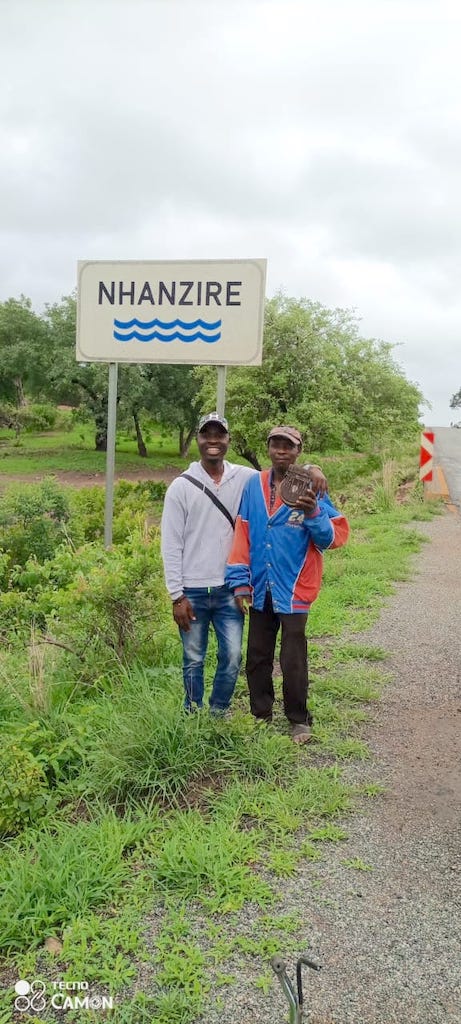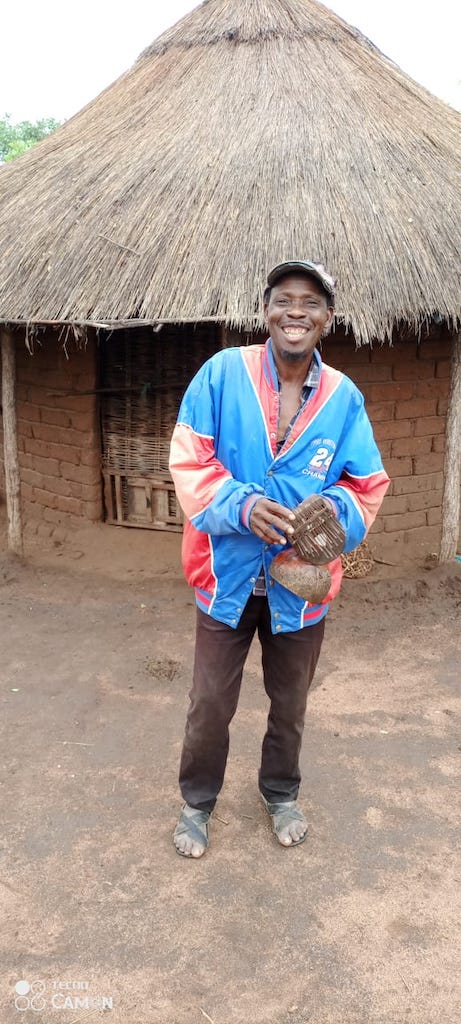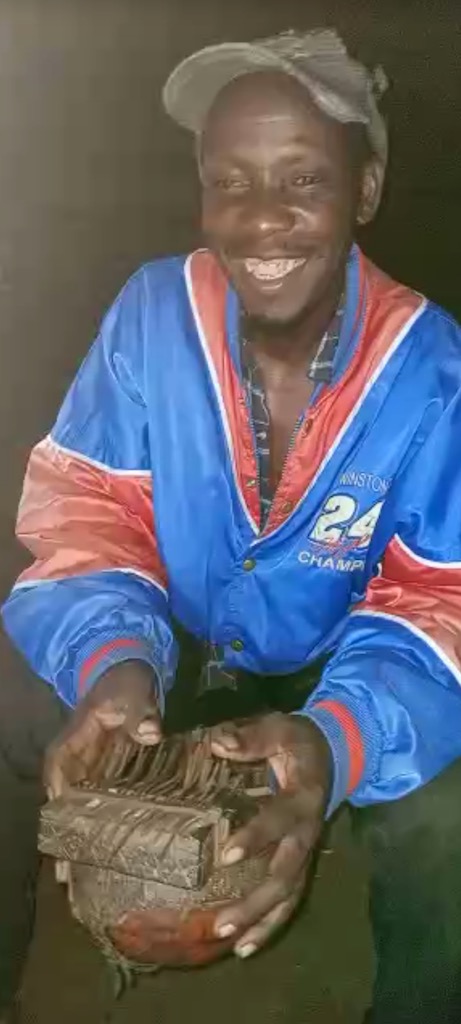Please contribute to our
fundraiser
».
Thank you if you already have!
Sekuru Kapampanta
Kalimba mudoko maker & player Phone: +258 86 743 6008 (no Whatsapp)Place of residence: Nhanzire, Guro district, Manica province
Meeting point: Nhanzire bridge (see picture below)
Biography
Americo Thekessi, also known as Kapampanta, makes and plays the Kalimba mudoko (small kalimba). His nickname, "Kapampanta", refers to his proficiency in "beating" the instrument. Sekuru Kapampanta is uncertain of his exact birth year. His identification card states that he was born in 1970, but he recalls attending first grade at a primary school in Chin'ombe, Mungari administrative post, in 1973. The school was located in a military base run by FRELIMO, where all members of the community were required to go for education during times of war. Kapampanta belongs to the Tonga ethnic group, like his parents who are also from Chin'ombe. His totem is called Chirenje, but he is unsure of the animal that represents it. His late fathers claimed that it is represented by the hood, a larger animal similar to an impala, but Kapampanta is not satisfied with this representation.Music
Sekuru Kapampanta plays the Kalimba mudoko, which he also refers to by the generic name "chisansi" (~"big keys"). It is a type of kalimba that originates from the Tonga people, also referred to as the "Kalimba of vatonga". Typically a solo instrument, he sometimes plays in an ensemble with other instruments such as the hosho, ngoma, kayembe (raft rattle), and clapping hands (kuombera maoko). Kapampanta began learning to play the kalimba at the age of 15-18. He became interested in the instrument when he visited Kanyama, a nearby community where his mother was from, and saw his uncles Alberto Buraki, Baltazar Narete, and Manuel Narete playing it. The players who made the biggest impression on him were Alberto Buraki, who served as a teacher for all of them, and later Lazaro Vinho when he met him. Sekuru Kapampanta has a wide repertory of songs. He frequently plays his favorite "Kubara mature ndekha", as well as "Ndikharewa dzvakuseka", "Kapendekari", and "Kamwana kan'onon'ono". Besides personal entertainment, he plays his Kalimba at various ceremonies such as Bwada (when traditional beer is brewed to thank God for rain), and when officials visit the community to address political and administrative issues. He believes it is important for players to master their instrument, be able to play something that brings joy to others, and offer guidance and advice through their songs.Ine penu mayi ~ I don't know if I will survive this year
Ushamwari ngaufe ndadi shefi Pt.1
Ushamwari ngaufe ndadi shefi Pt.2
Rosada iwe Pt. 1 (coming soon)
Rosada iwe Pt. 2 (coming soon)
Ndikharewa dzvakuseka ine Pt.1 (coming soom)
Ndikharewa dzvakuseka ine Pt.1 (coming soom)


